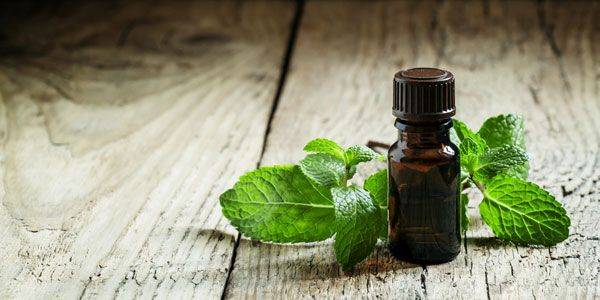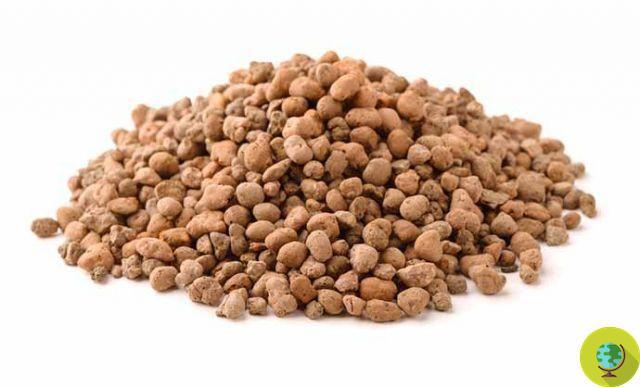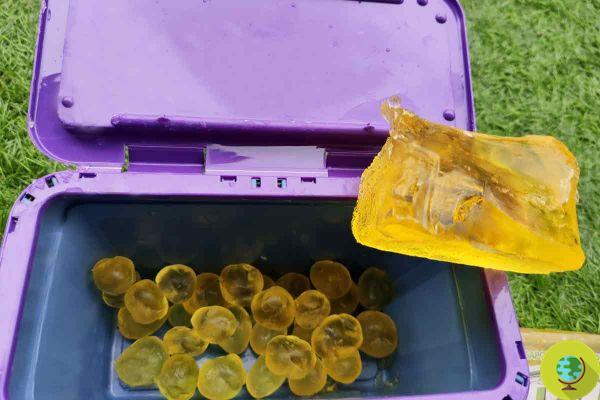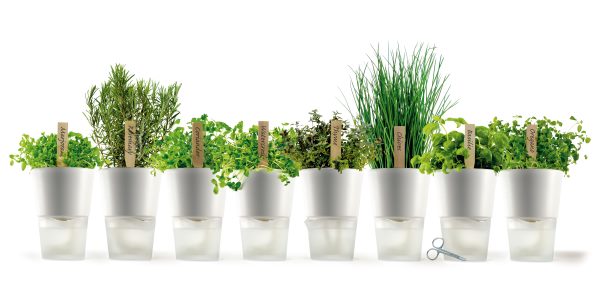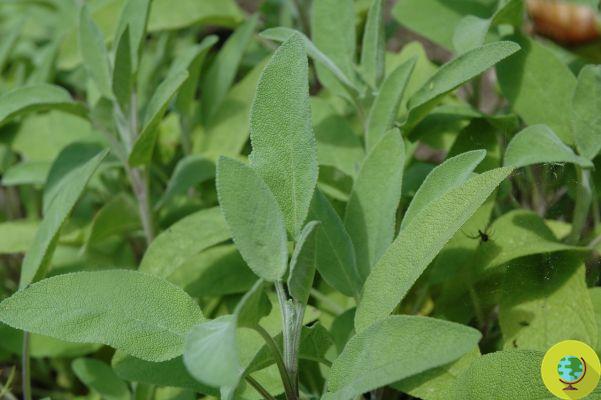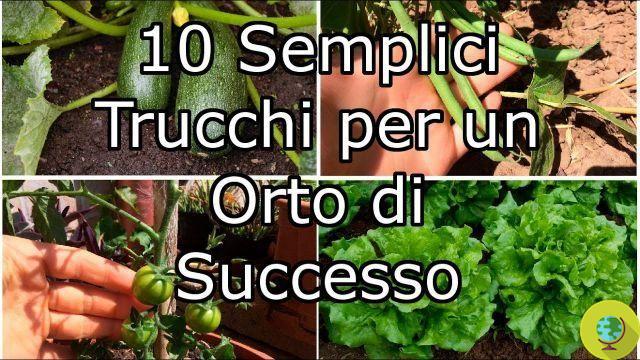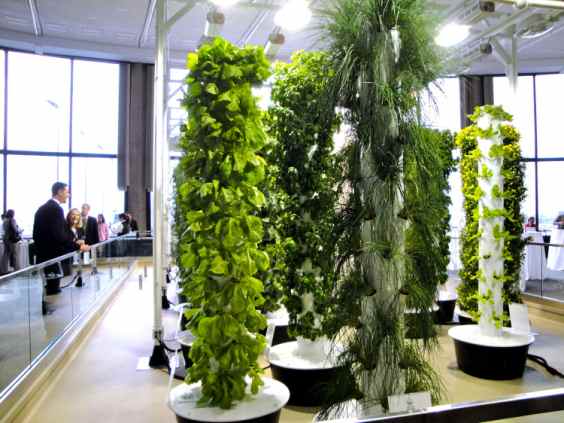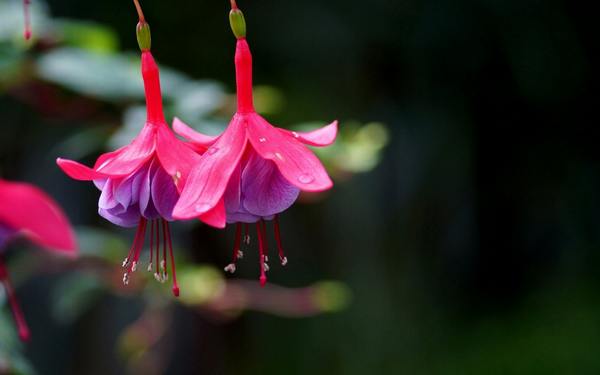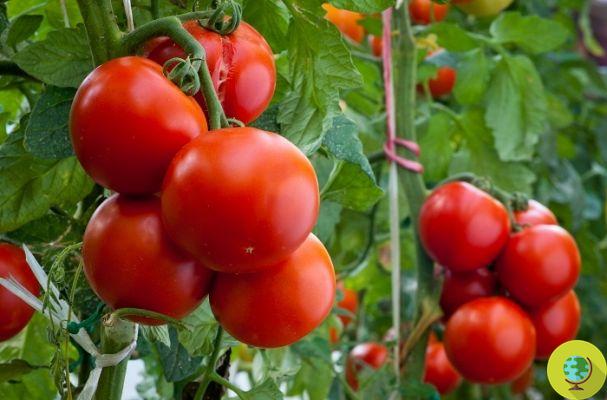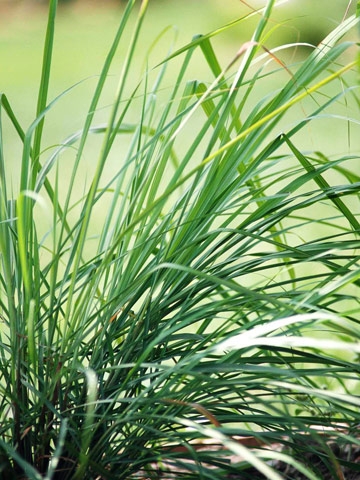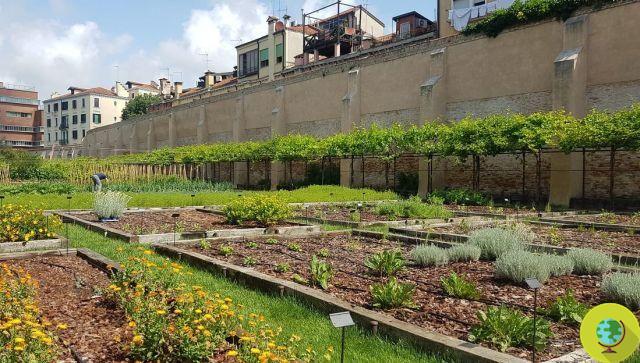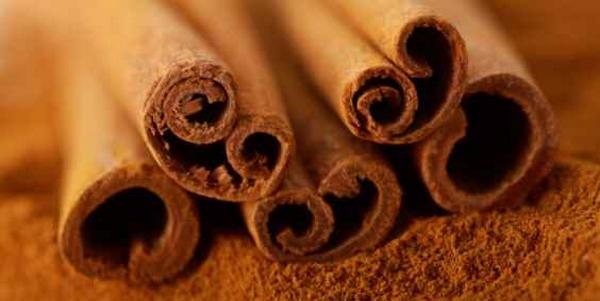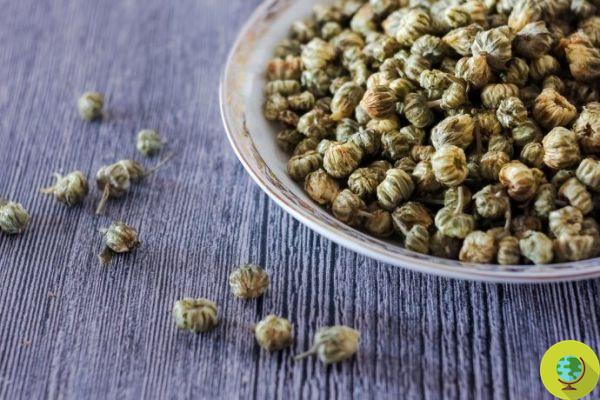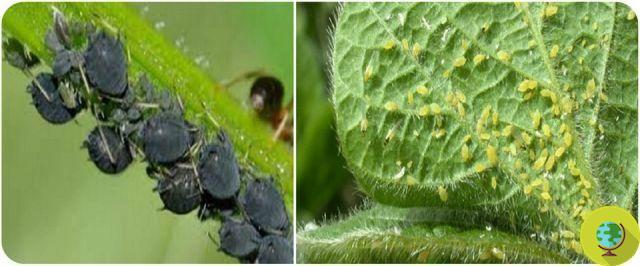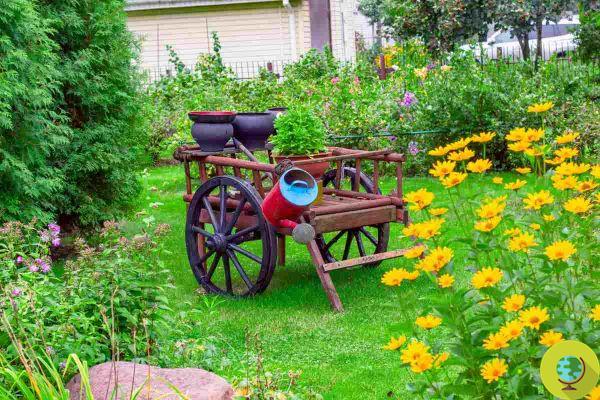Discover all the diseases of aromatic plants and the most effective remedies for fungi, molds and parasites typical of the herbs you use in the kitchen
Discover all the diseases of aromatic plants and the most effective remedies to treat fungi, molds and parasites typical of the herbs you use in the kitchen
When you are talking about aromatic plants we refer to those species with green and non-woody stems; these are used in the kitchen because various parts can be used, not only the leaves but also the fruits, flowers and roots.
Some herbs they are very resistant to environmental stresses and attacks by parasites, others are more sensitive to attacks by fungi or insects that can even cause the death of the plant itself.
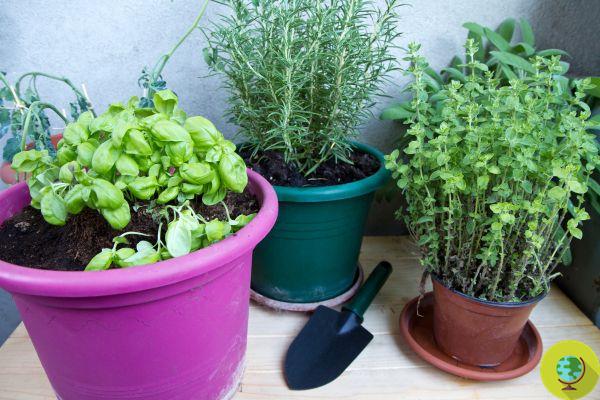
@ tashka2000 / 123rf
Index
Parasites of aromatic plants
Among the most common pests of aromatic plants there are the aphids, also often called lice some plants. These are small insects that feed on the sap through bites, which weaken the plant.
Furthermore, these parasites release a sugary substance called honeydew which prevents chlorophyll photosynthesis; but that's not all, because through the stings they are also able to transmit viruses from infected plants to healthy plants.
Among others parasites of aromatic plants we find the cochineal, that is a small round and flat insect, with a brown or white shield on its back; there are also some beetles and insects such as bedbugs, mites and leafhoppers, which feed on the leaves and other parts of the plant.
Aromatic plants can also be attacked by some fungi, such as botrytis, the Peronospora andpowdery mildew. (Read also: Plant diseases and pests: how to recognize them. Symptoms and remedies)
How to treat pests of aromatic plants
The best strategy for protect aromatic plants from parasites it is prevention, which consists in controlling the leaves and always eliminating the unhealthy parts. Therefore, periodic monitoring of the health of plants is the only really effective way to be able to protect them from external attacks.
Here are some useful tips:
- Be careful with nitrogen fertilizers, as too much nitrogen makes plants more appetizing for fungal parasites and insects
- Promote ventilation between the leaves and avoid stagnation of water and humidity, often the cause of fungal diseases
- Avoid sprinkling irrigation, so as not to wet the leaves and spread fungal diseases; Use mechanical defense systems such as traps and insect nets
- Use natural fungicidal sprays and pesticides of natural origin
- Use infusions, macerates and decoctions with repellent action and to increase the natural defenses of plants
Aromatic plants and mold: what to do
Aromatic plants are more resistant to diseases and pests than houseplants, but they can also be attacked by mold, for example if they are watered too often or if there is too much humidity they can get sick. (Read also Natural fungicidal spray at no cost: against mold, mycosis and plant fungi, use baking soda in this way)
How does mold appear on aromatic plants
La mold occurs when there is too much moisture in the soil, which due to excessive irrigation fails to dry out.
This appears as a dark gray to black powder present on the leaves; it spreads very quickly and, in less than a week, it may have attacked the whole plant. It first attacks the leaves and young branches, and then spreads gradually over the older and thicker branches.
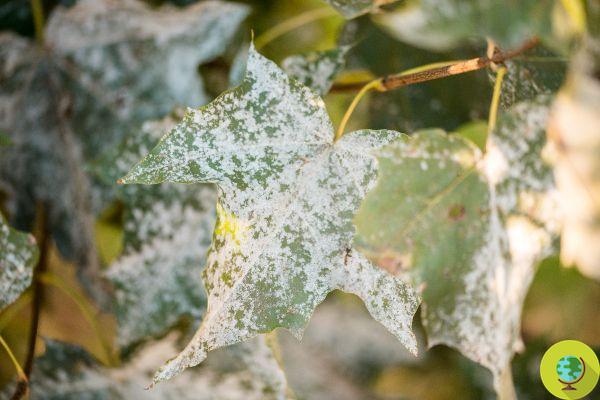
@Iryna Sialitskaya / 123rf
How to save aromatic plants from mold
save aromatic plants, we recommend that you carefully cut all leaves or branches affected by mold. Discarded leaves should be removed and not allowed to rot near healthy shrubs, as they could be affected.
Also, it is good practice to wash your hands thoroughly to get rid of all mold spores before touching healthy plants.
Another vital step is to cut off plants that have too many leaves and twigs, so that air and sun can penetrate and prevent mold growth.
Furthermore, in case of mold, remember to avoid using products with chemicals because in this way you will infect the food; therefore, you prefer natural and green products that you can make at home with simple pantry ingredients, such as garlic scraps, baking soda or apple cider vinegar. (Read also: Aphids: how to fight plant "lice" with ... cinnamon!)
The main diseases of aromatic plants
In addition to mold, aromatic plants can also be attacked by fungi and parasites. Here are the main ones, how to treat and eradicate them.
Powdery mildew
THEpowdery mildew leaves a white powdery coating on leaves, stems and flowers. It is caused by a fungus, affecting a number of plants, including lilacs, apples, grapes, cucumbers, peas, daisies and roses.
To eliminate it you have to remove the infected leaves, to reduce the spread of spores. Also, give the plants good drainage and ample air circulation. Avoid overhead watering at night, best to water the plants mid-morning and allow the foliage to dry before evening.
Commercial fungicides for powdery mildew are available, or you can spray a solution made with a teaspoon of baking soda and a quart of water.
Downy mildew
La Peronospora it is caused by fungal-like organisms and affects many ornamental and aromatic plants, such as pansies, grapevines, lettuce, and crops such as broccoli and cauliflower. Often present during the wet season, downy mildew causes discoloration of the upper part of the leaves, while the lower part develops white or gray mold.
To eradicate this disease, unfortunately, no fungicides are available and infected foliage or the entire plant must be removed and destroyed if downy mildew is widespread. The advice to prevent this problem is to avoid crowding the plants or watering them in the evening.
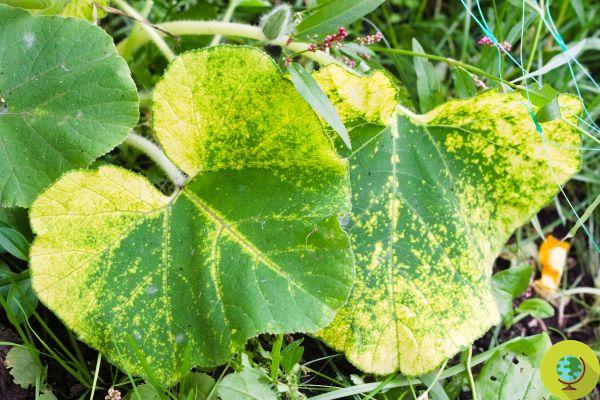
@Elena_Abduramanova/123rf
Black spot
La black spot is a fungal disease commonly found on roses, but also on other flowers and fruits. While it doesn't kill plants, it weakens them and makes them susceptible to other problems. In cool, wet weather, small black spots appear on the foliage, which begins to turn yellow and eventually falls off.
To get rid of the fungus, remove the diseased leaves and keep the foliage clean and dry; another solution is to place the plants where the sun shines and water only the roots and not the leaves. (Read also Natural fungicidal spray for tomatoes at almost zero cost starting with garlic)
Appassimento del fusarium
Caused by a soil fungus, theappassimento del fusarium affects ornamental and edible plants including beans, tomatoes, peas and asparagus. The disease causes wilted leaves and stunted plants, as well as rot and blackening of the stem. It is particularly active in hot summer temperatures.
If fusarium wilt shows up somewhere in the garden, remove and destroy infected plants, and don't plant the same species in that spot for five years.
Sooty mold
La sooty mold it grows on sticky deposits, called honeydew, left by insects. This mold on the leaves is not only unpleasant to look at, but prevents photosynthesis and blocks the growth of plants.
To deal with sooty mold, it is necessary to eradicate the insects that leave the honeydew, namely aphids, leafhoppers and scale insects. How? Spray some insecticidal soap orneem oil, a 100% natural repellent.
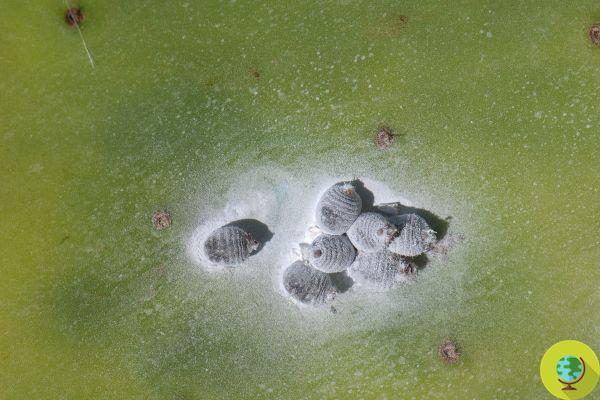
@Victor Suarez Naranjo/123rf
Rust
La ruggine is another fungal disease, easy to spot because it forms rusty spots on the leaves and sometimes on the stems. The spots eventually progress from reddish orange to black. There are many types of rust that can attack plants such as mallows, roses and even tomatoes.
To treat this disease they are available specific fungicides on the market; obviously, if it is widespread, it is best to collect and destroy all infected plants.
- Follow your Telegram
- Follow her Instagram
Could it be interesting for you
- 12 do-it-yourself organic fertilizers and pesticides against garden pests
- Aphids: 10 natural remedies to protect vegetable and garden plants without toxic products
- You may not know this but you can make an amazing natural fertilizer for your plants from a carrot. Very easy and at no cost
- Garlic alcohol, how to prepare the infallible natural insecticide against plant aphids and scale insects
- Epsom salts, this excellent fertilizer is an effective and natural additive for growing plantse
- Plant diseases and pests: how to recognize them. Symptoms and remedies
- Climate change favors the expansion of parasites
- Tomato macerate against aphids and garden parasites




